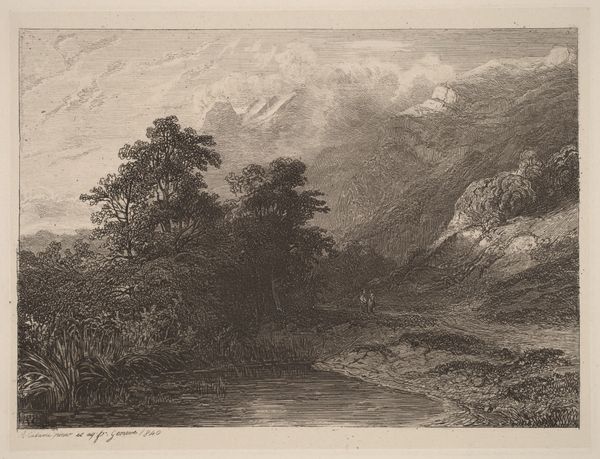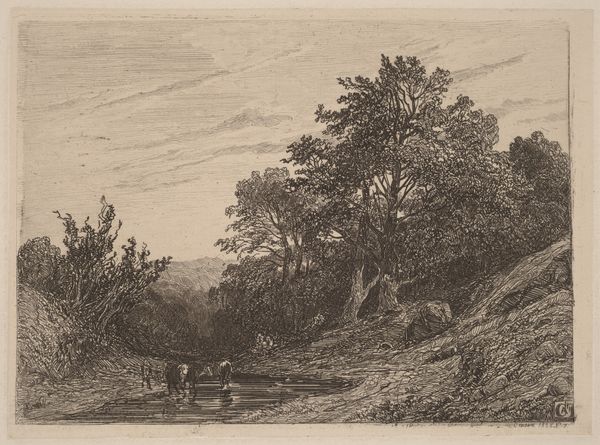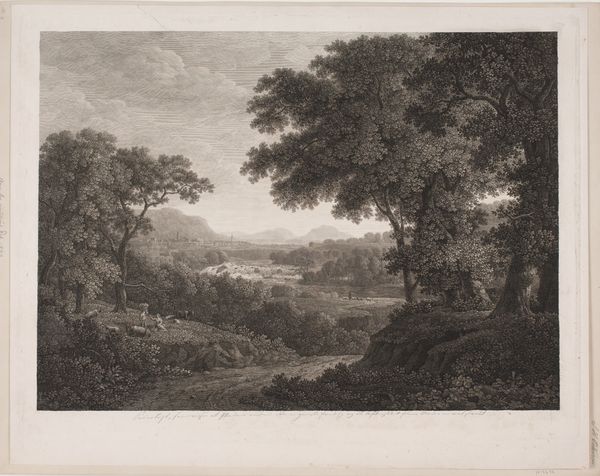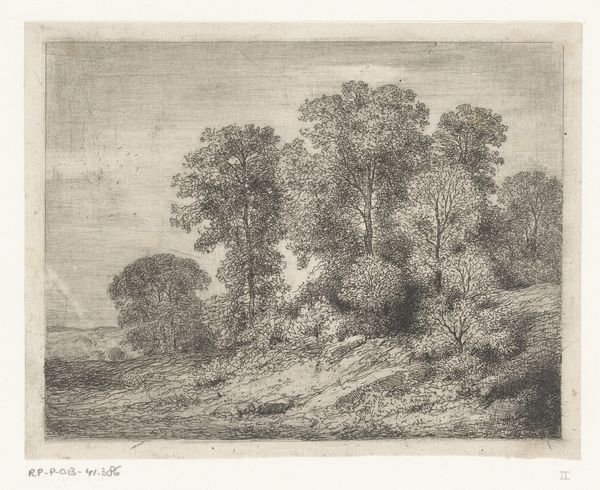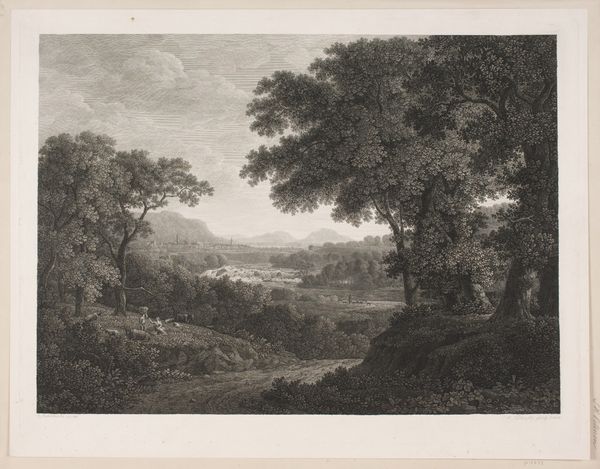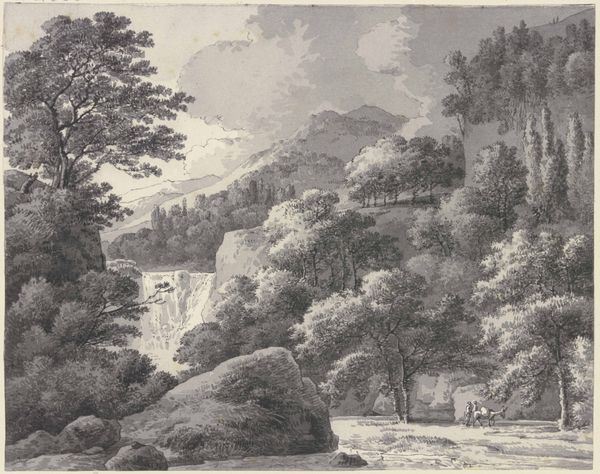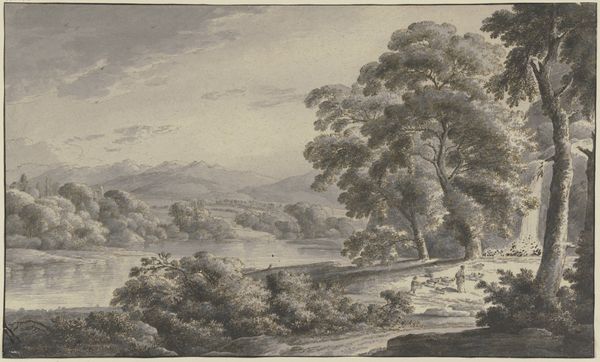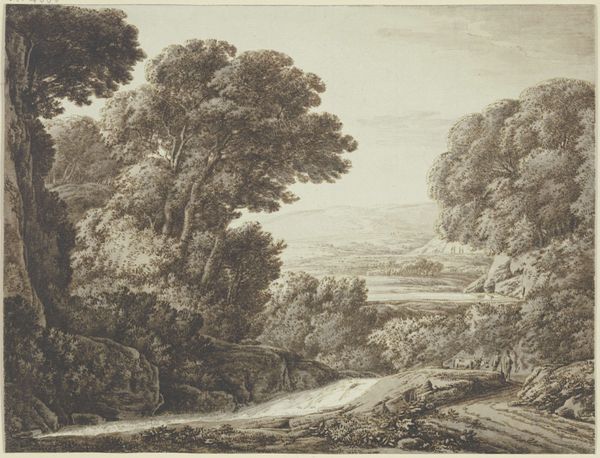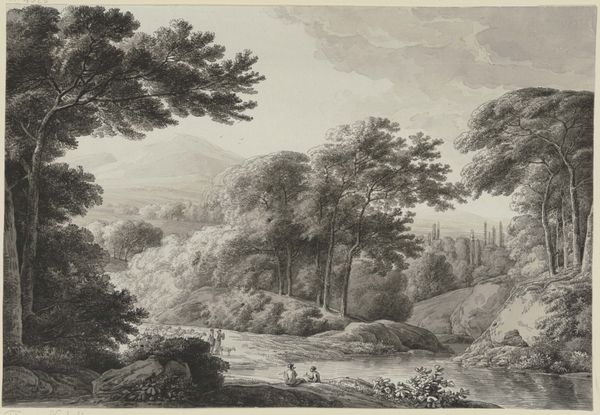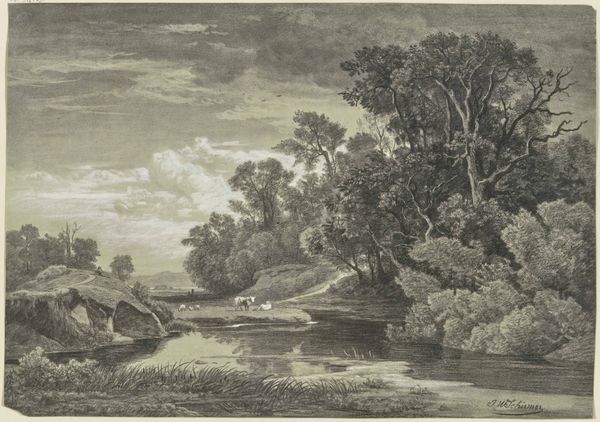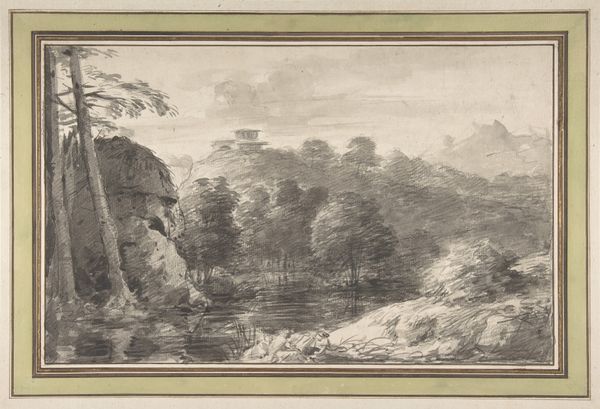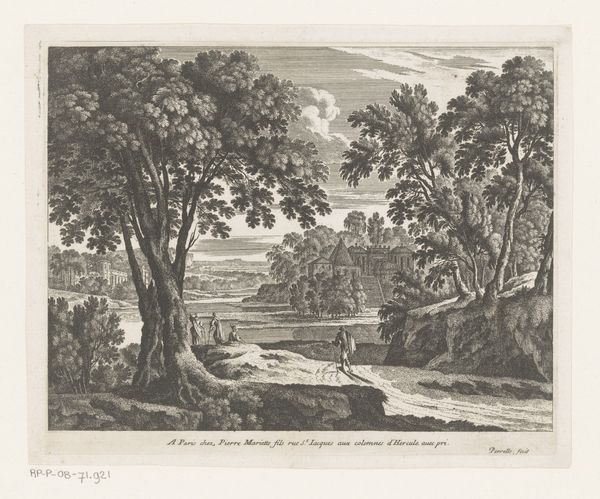
drawing, print, etching
#
drawing
# print
#
etching
#
landscape
#
pencil drawing
#
romanticism
Dimensions: plate: 21.9 x 27 cm (8 5/8 x 10 5/8 in.) sheet: 27 x 35.9 cm (10 5/8 x 14 1/8 in.)
Copyright: National Gallery of Art: CC0 1.0
Editor: Here we have Alexandre Calame's "Mountain Stream," an etching from 1840. There's a serene stillness about it; the detail is incredible given it's a print. What draws your eye in this piece? Curator: This work, and Calame's landscapes in general, speak to the rise of Romanticism and its relationship to ideas about nationhood and the sublime. What role did depictions of nature play in shaping national identity, especially in a place like Switzerland? What does it mean to idealize these spaces? The very act of framing nature through art is political. Editor: So it's less about the scene itself and more about what it represents to society? Curator: Precisely. Think about how this image might have been received in 1840. Was it purely an aesthetic experience, or did it evoke deeper feelings of belonging, patriotism, or even ownership of this landscape? What social classes had access to artwork like this? The consumption of such imagery likely reinforced a particular view of Swiss identity. Editor: It’s like, by making the mountains beautiful and majestic, it creates pride and attachment to that space. And if you control the image, you control the narrative. Curator: Exactly. And consider where it was exhibited, who purchased it, and how it circulated. The museum or gallery becomes a stage for shaping cultural values and influencing public perception. Also, how does it function as a print? To whom was it available and how might its reproduction influence public engagement with the location? Editor: I hadn't thought about the power dynamics at play within a landscape. That's a perspective shift for me, realizing how images contribute to broader social and political landscapes. Curator: Art offers this opportunity, and as a work of Romanticism, understanding its display contextualizes what part it may have played in the culture and society of its time. It pushes us to question how and why we value certain imagery.
Comments
No comments
Be the first to comment and join the conversation on the ultimate creative platform.
